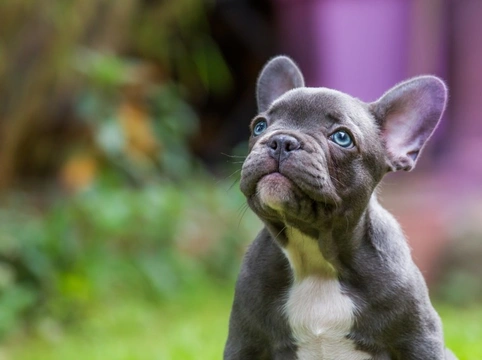
Why do some dog breeds have flat faces?
Dogs and dog breeds come in a huge variety of different shapes, types and colours, and more or less any trait you can think of will differ to some extent from one dog breed to the next. Some traits are more obvious than others, such as size, coat colour, and build, and when it comes to the shape of a dog’s face and the length of their muzzle, there are a whole range of different types to be found across dogs as a whole too.
So different can the nose and face shape be from one dog breed to another in fact that there are even different types and shapes of restrictive cage muzzles and restraints made to accommodate for this; and dogs with very long, pointed noses need quite a different muzzle to those with very flat ones!
Flat-faced dog breeds and types as a whole are really popular in the UK at the moment, and this encompasses many of our most popular breeds including the French bulldog, English bulldog, and pug. This trait of having a very flat face is known as being brachycephalic, which means having an abnormally short muzzle and soft palate.
However, this flat face does more than just cause a distinctive appearance that many people find cute, desirable and part of the breed’s appeal, and commonly has implications for the health and wellness of the breeds that exhibit it too.
This is something that any prospective buyer of a flat faced dog breed should bear in mind, and you might also want to think too about why and how some dog breeds have this flat face in the first place, because the answers might surprise you!
This article will explain why some dog breeds have flat faces, how this occurred, and how it correlates (or not) with the evolution of dogs as a species.
How brachycephalic dogs came into being
Brachycephaly is a genetic trait that is not found in any dog or wolf species in the wild other than in incredibly rare standalone presentations as a genetic mutation or anomaly present in individual animals or closely related ones, such as those from within the same litter.
The trait of brachycephaly isn’t one that developed by means of natural selection, because it is not present in and has not evolved in dogs in the wild on its own; brachycephalic dogs are, ultimately, an entirely human creation.
We call this process artificial selection or selective breeding, which means deliberately mating two dogs with each other to produce a trait we want and to eliminate others. All planned dog breeding is in fact selective breeding – because we choose the mates for the dogs in question. This might be as broad as picking a dog of the same breed, or as narrowly defined as picking dogs with a number of key traits or from certain bloodlines, but selective breeding is the basis of all modern dog breeds and breed standards.
Selective breeding
Selective breeding is used to manipulate the results of a mating match by choosing parent dogs with certain traits, which in turn, increases the chances of those same traits being reproduced in their litter.
Over time, traits that are only present to a certain degree or that start off as very mild can be exaggerated and strengthened in subsequent generations down the line with selective breeding; which is what created our brachycephalic breeds.
The very first ancestor dogs of any given brachycephalic breed might only have had a nose and muzzle a touch shorter than the norm; but mating two such dogs together reinforces that trait, and mating those offspring with yet others bred for the same trait serves to both spread the trait, and if desired, make it more acute too.
If you look at historical images of pugs, English bulldogs and other long-established brachycephalic breeds, you may be shocked at how long and moderate their muzzles look compared to today’s norms; because we as people created a demand for ever-flatter faces, and selectively bred dogs to possess them.
Brachycephaly, artificial selection and evolution
Evolution and natural selection of course favours the animals that are the fittest for life. Dogs that are generally unhealthy, disadvantaged, or that otherwise have a limitation or flaw that might affect their survival in the wild rarely survive for many generations, much less spread widely and increase in numbers year on year like the members of our many flat-faced dog breeds have.
The trait of being brachycephalic is, in evolutionary terms, a disadvantage, because it commonly causes problems to some degree for the dogs that possess said trait.
In some dogs this might be so slight as to be undetectable, but in others it has huge limitations, including preventing the dog from being able to breathe comfortably, a tendency to overheating, being unable to deliver young without caesarean section, limited ability to run and play, and a range of other issues too.
Altogether, this means that brachycephalic dogs would not thrive in the wild, and would be exponentially more likely than other dogs to lead shorter lifespans, be unable to compete for food, be more at risk of predators, and ergo, be apt to die out within a few generations at best.
So, how come brachycephalic dogs are so common and numerous, including acutely brachycephalic dogs and even those that cannot mate and birth young without assistance?
Because of that aforementioned selective breeding, or to give it its scientific name, artificial selection.
If we as humans didn’t breed dogs and choose mating matches designed to reproduce a trait not present and maintainable in nature, brachycephalic dogs would die out within a few generations!



